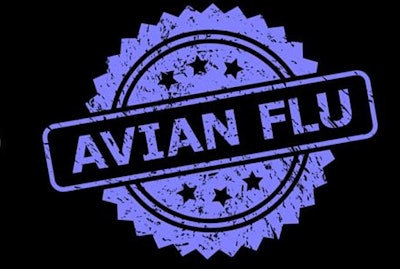
As Germany reports the first detection of the H7N5 variant of highly pathogenic avian influenza (HPAI) virus, animal health agencies across Europe are urged to increase disease surveillance efforts ahead of the expected start of the next disease “season.”
The latest assessment of the HPAI situation in Europe from the European Food Safety Authority (EFSA) is generally upbeat. It highlights that the number of cases in the region’s wild birds and poultry so far in 2023-2024 has been the lowest since 2019-2020. Furthermore, EFSA states that the health risk to the general public continues to be low. For those exposed to contaminated environments or infected birds, the risk is assessed as low-to-moderate.
However, there is uncertainty over the reason for the decline in outbreaks over the March-June period of the study, which EFSA carried out with the European Centre for Disease Prevention and Control (ECDC), and the EU reference laboratory (EURL).
Even if recent case numbers are low, there is evidence that HPAI virus continues to circulate among European wild bird populations.
Between mid-March and mid-June of 2024, the report puts the number of detections of HPAI A(H5) viruses in Europe at 42. This total comprises 15 in domestic birds, and 27 in wild avian species in 13 countries.
Outside Europe, the study also highlights the recent detection of HPAI virus for the first time in Australia, and a growing number of infections with a different virus genotype (B3.13) in U.S. dairy cows, as well as other “unusual hosts,” which include a variety of mammalian species.
This combination of developments led EFSA and the other agencies to call on the region’s authorities to step up surveillance ahead of the start of the next HPAI season in the coming months.
Germany detects H7N5 HPAI virus for the first time
At the end of June, laying hens at a farm in Lower Saxony tested positive for HPAI after 6,000 of the near-91,000-bird flock died.
According to the official notification to World Organisation for Animal Health (WOAH), the virus was identified as the H7N5 serotype, making this the first detection of this variant in the country. The remaining layers at the premises have been destroyed, according to the report.
These are also the first cases affected by this virus variant in Europe this year, based on details recorded by the Animal Disease Information System from the European Commission (as of July 3).
Positive tests for an H7 virus contrasts with different variants of the H5 virus family, which have been detected in Germany and more widely in Europe in recent years, according to the national veterinary reference laboratory, Friedrich-Loeffler Institute (FLI).
Previous studies there indicate the new variant likely emerged as the result of a mutation of a previously existing low-pathogenic avian influenza virus. These mutations are thought to occur sporadically.
Germany’s most recent HPAI outbreak linked to an H7 virus was in 2015, when an H7N7 variant was discovered in the same region of Lower Saxony, according to FLI.
The index farm appears from the WOAH report to be in close proximity to the border with the Netherlands.
As a precaution against the spread of the disease, the Dutch agriculture ministry immediately set up a restriction zone within 10km of the outbreak farm. At six Dutch poultry farms within this zone, a ban is in place on movements of birds, eggs, other animals, manure, and used litter.
According to this source, detection of the H7 HPAI virus in Lower Saxony is the first to occur so close to the Netherlands since 2003. So far, none of the nation’s wild birds has tested positive for this virus.
HPAI vaccination of ducks continues in France
As of June 28, more than 41.6 million of the nation’s ducks had received their first dose of vaccine against HPAI, according to the French agriculture ministry.
Vaccination has occurred in all regions. Numbers of ducks vaccinated have been highest in the main centers of duck farming in the west of the country, including Pays de la Loire (18.0 million birds received their first vaccine dose), Nouvelle-Aquitaine (11.8 million), Occitania (5.0 million), and Bretagne (Brittany; 4.2 million).
Following devastating losses from HPAI in recent years, a nationwide vaccination campaign started in October of last year. Funded by the state, the program required the vaccination of all commercial ducks across mainland France except those producing products for export.
Other avian flu-related developments in Europe
Over the past two weeks, a small number of wild birds have tested positive for HPAI in European countries. All were linked to H5N1 HPAI virus.
Based on official notifications to WOAH, there were two new cases in each of Germany, and Poland, and one in both France and Spain.
In recent weeks, researchers based in the Netherlands have reported initial indications that two HPAI vaccines under investigation are effective in laying hens housed under commercial conditions. The trial is expected to continue until the third quarter of 2025.
View our continuing coverage of the global avian influenza situation in poultry, and on disease developments in the U.S. dairy sector.


















